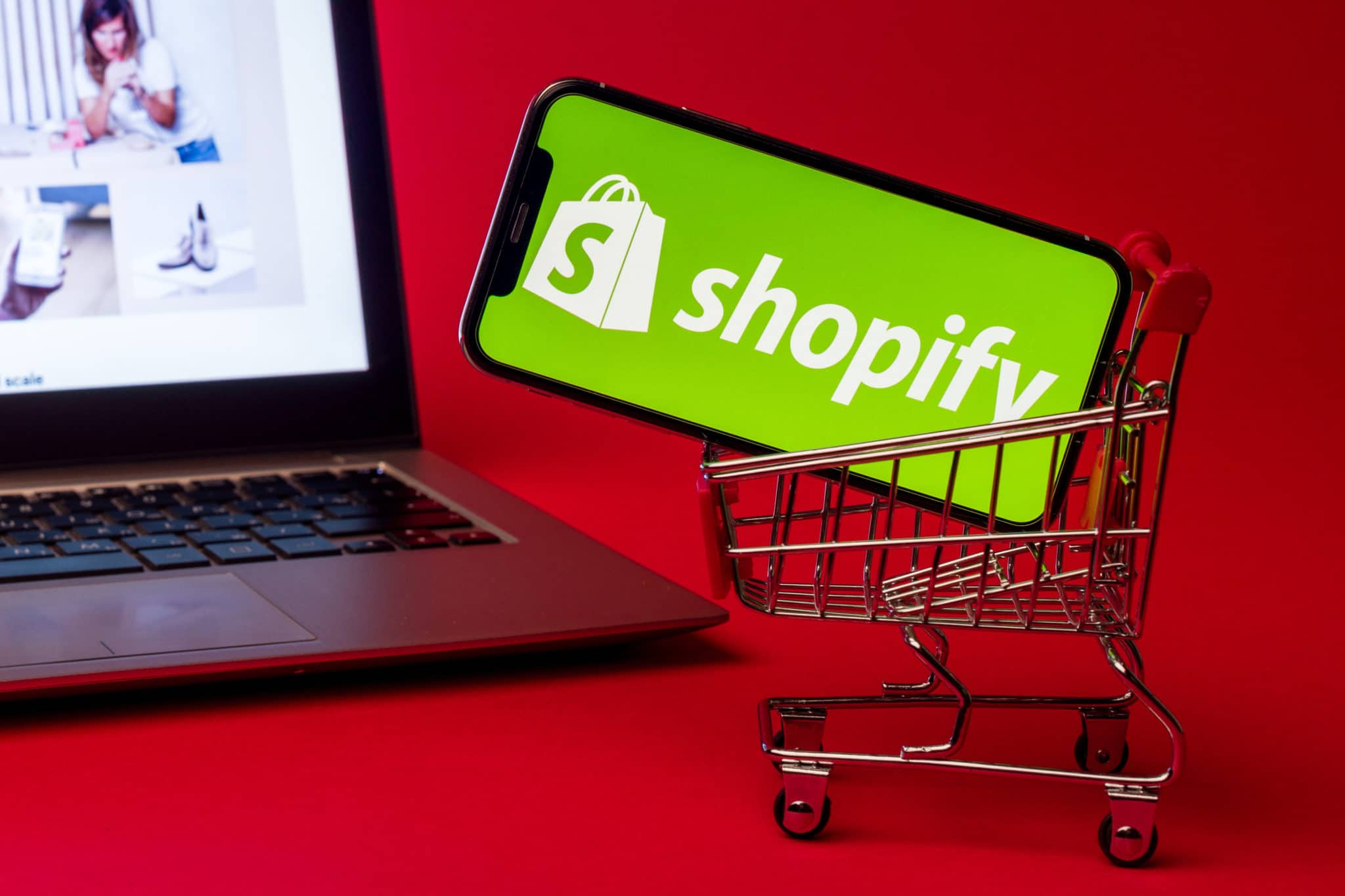

It has been just over one year since Shopify dual-listed on both the NYSE and the TSX, providing the Canadian technology scene with one of its unqualified success stories.
After appearing on the main stage of the C2MTL conference, in conversation with Charlottetown, P.E.I.’s very own Amber MacArthur, Shopify chief operating officer Harley Finkelstein headed upstairs to take questions from a handful of assembled press.
Asked how Shopify remains true to its core values while experiencing the growing pains of a publicly traded technology company, Finkelstein stressed the “default to open” and modular nature of the company’s structure, which ensure that the same problems that have historically brought companies down as they get stuck in a morass of bureaucracy don’t also trap Shopify.
Companies and start-up entrepreneurs use the word “disruption” a little too regularly these days, and while Finkelstein didn’t use the word once himself in conversation, it’s tough to think of a company that has more effectively disrupted an incumbent industry than Shopify.
“If you look at the software industry historically, let’s say I started a business and I needed accounting software,” he says. “I could start with an Excel spreadsheet. And then eventually I’d move to QuickBooks or Xero. And then eventually, I’d move to NetSuite and eventually to Oracle. There was this automatic graduation to different software packages as you grew.”
Shopify’s scalability is difficult to communicate to businesspeople and companies who assume that they’re eventually going to have to discard Shopify as they get bigger, based on those old assumptions.
But as those companies simply pocket the massive budgets they used to spend implementing large-scale IT operations for e-commerce, it’s hard to understate the eureka nature of Shopify’s offering and the effect of that realization on how they approach the rest of their business.
“It’s fascinating because we’re getting migrations off Demandware and Magento that are coming to Shopify,” he says. “These people were paying millions of dollars a year for their previous software. They’re paying us $12,000. To some extent, I almost have to educate the market on the fact that they can use Shopify, even though it’s $12,000 and they think it’s super-inexpensive, we can handle massive sales.”
“One of the reasons that we cross-listed on the New York Stock Exchange and the TSX was because we wanted to be a Canadian story, as well. But we need more IPO’s here.” – Shopify Chief Operating Officer Harley Finkelstein
These days, Finkelstein is not only Shopify’s chief operating officer, but also a board member for OMERS Ventures and the C100, which gives him a unique overview (and underview) of Canada’s venture capital scene as it focuses increasingly on our technology companies.
“Canadians tend to be a little bit too humble and too risk-averse when it comes to that stuff,” he says. “Our Series A, which was $7 million in 2010, it was Bessemer and FirstMark, two U.S. venture funds. For our Series B, where we raised $15 million, we brought in Georgian Partners. That was our first Canadian VC. Then our Series C, which was a $100 million round, that’s when OMERS got involved. I was really happy to have Canadian money involved, because we’re a proud Canadian story, but I still think it can get better.”
Shopify remains the preeminent example of a company that came out of start-up culture and listed on the public markets.
“One of the reasons that we cross-listed on the New York Stock Exchange and the TSX was because we wanted to be a Canadian story, as well,” says Finkelstein. “But we need more IPO’s here. And to be honest with you, after we went public we called our peers, who are running some of the greatest Canadian start-ups in technology, and we said, ‘Here’s what we did. Here’s the road map. Here’s all the different things you need to think about.’ Our American peers were not doing that. It’s a little more competitive there, as opposed to collaborative.”
For Canadian companies coming up through start-up culture now, it helps a lot that they can look at Shopify and ask themselves, “How do we get there from here?”
Asked about Shopify’s prospects for future growth, Finkelstein matter-of-factly admits that the company’s focus has been limited by its English-language bias.
“When we were going public, the first question we got from most investors was, What is your total addressable market, or our TAM? We currently have 275,000 merchants who use Shopify,” he says. “Most of those merchants self-identify today as retail SMBs. If you look at our core geographies, which is U.S, Canada, U.K., Australia, New Zealand, and Western Europe, there are actually 10 million retail SMBs in those geographies. If you expand to a global TAM, you actually have 46 million retail SMBs. So obviously, we have a lot of room to grow.”
This is a fact not lost on Shopify’s competition, as mentioned by Montreal-based Lightspeed’s chief revenue officer JP Chauvet in a recent interview with Cantech Letter, who mentioned Lightspeed’s natural advantage with francophone and European clients.
“I think we can do a much better job in places like India and Southeast Asia and South America, from a geographical perspective,” says Finkelstein.
Still, while Finkelstein emphasizes that Shopify’s first loyalty is to entrepreneurs, and even to people who don’t self-identify as entrepreneurs but merely as people who want to sell a thing through their website, he’s also quick to mention that Tesla, Budweiser, Kylie Jenner, Kanye West and Radiohead have joined the company’s customer base of 275,000 online merchants in 150 countries.
While that scale obviously matters to Shopify’s bottom line and scale, it’s the continued focus on mom-and-pop online retail that will grow Shopify to the next level.
“I think that’s where some of our growth will come from,” he says. “There are people who are going to sign up for Shopify today who only want to sell on Facebook, without having an online store. Two or three years ago, that wasn’t the case. People were only using Shopify to set up an online store. And so, as we move to new retail channels, there’s another opportunity for us there.”
“These people were paying millions of dollars a year for their previous software. They’re paying us $12,000. To some extent, I almost have to educate the market on the fact that they can use Shopify, even though it’s $12,000 and they think it’s super-inexpensive, we can handle massive sales.”
Coming out of start-up culture didn’t just instill Shopify’s culture with a lot of meaningless buzzwords that sound inspiring at conferences.
It has become a cliché for a company to say that it drinks its own Kool-Aid, but Shopify does actually structure its own internal cultural feedback mechanisms in roughly the same way that they use APIs, providing the company with a modular structure, ensuring that the whole won’t collapse if one part gets bogged down.
“We also have APIs within the company,” says Finkelstein. “So we can create a Channels API, and our team internally can utilize our own APIs, which means that they can just build it on their own without waiting for another office to approve it. And I think when I look at other companies that have grown really, really big, it’s kind of like molasses, like they can’t run fast. It’s usually because of all this red tape. Ten or 30 people need to sign off on this one thing. Just making sure that doesn’t happen is one way to do it.”
Shopify also builds in weekly AMAs, or “Ask Me Anything” sessions, in which staff can put questions, anonymously if necessary, to the executive team, which internalizes a structure of transparency and openness that Finkelstein speculates may remain a challenge to maintain as the company grows larger.
“The highly aligned, loosely coupled philosophy has worked really well for us,” says Finkelstein. “What that means, really clearly, is that everyone knows what the objective is, everyone knows what the goals are, but no one has interdependencies within the business. So the Toronto team is focused on growth. They are not waiting for the check-out team in Montreal to do something for them to do their job better. And when you remove a lot of these interdependencies, it makes it a lot easier.”
Well aware that keeping that ability to run fast and adjust on the fly is going to become challenging as the company grows, Finkelstein also doesn’t shy away from expressing his ambition for the company to grow into a player on the world business stage.
“We’re probably going to be a company with many more thousand people one day,” he says. “So that’s one of the biggest challenges we have is, how do we run really fast and break things? So far we’ve done well with it.”
Shopify recently released the fundraising roadshow presentation that they used a year ago.
The video is itself a reflection of Shopify’s built-in culture of risk-taking, coming off more like a film directed by a European auteur than some anonymous PowerPoint presentation.
Leave a Reply
You must be logged in to post a comment.





 Share
Share Tweet
Tweet Share
Share




Comment